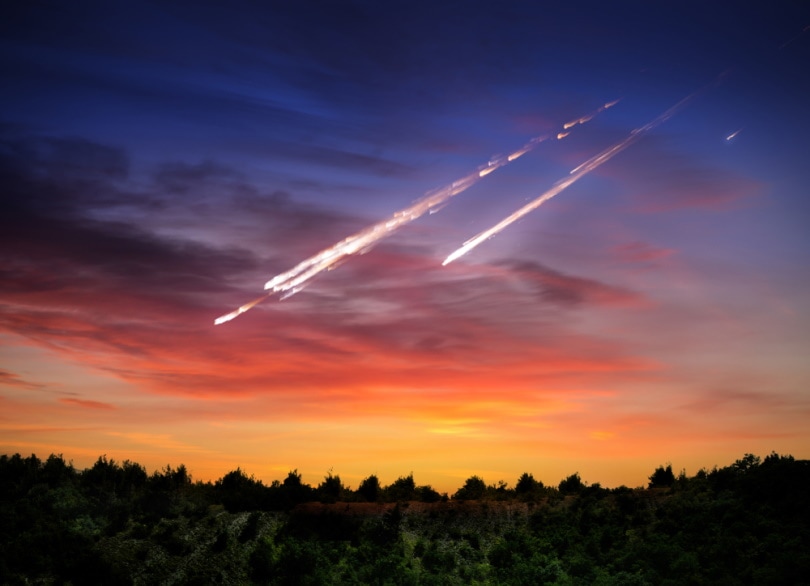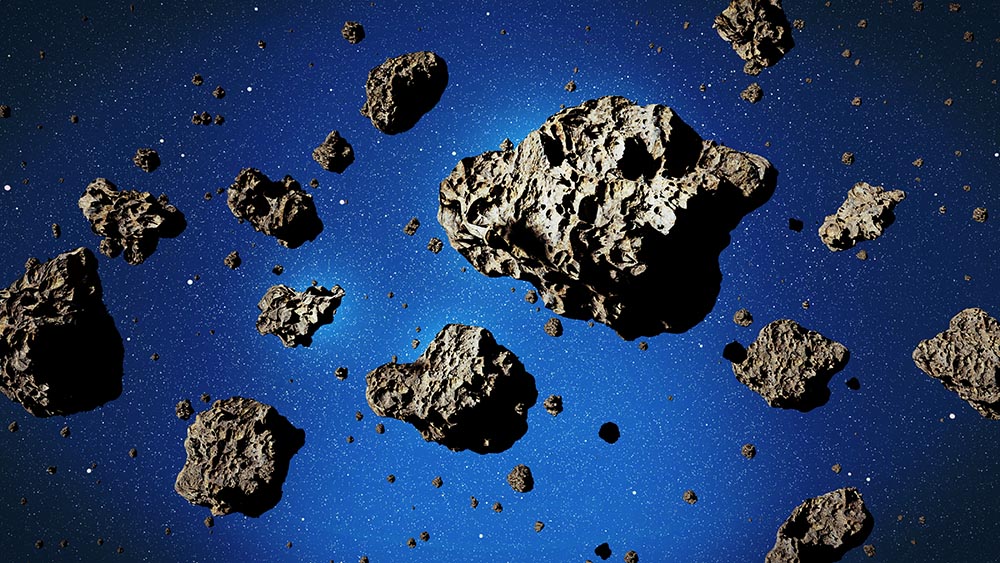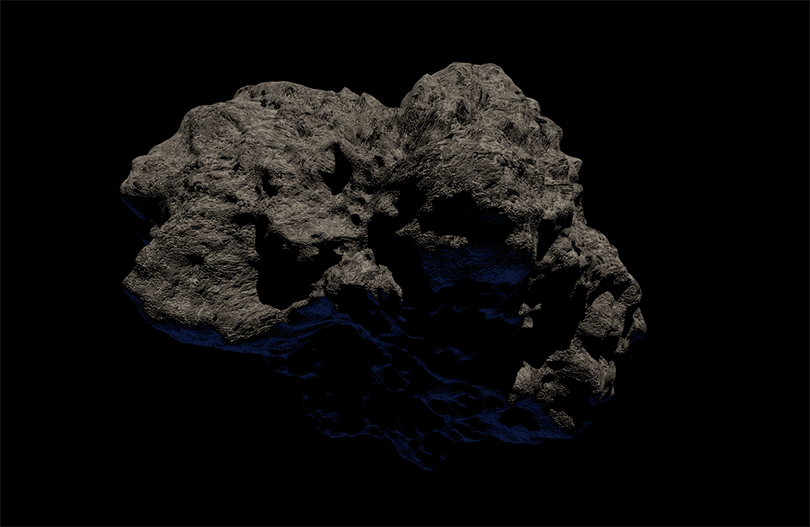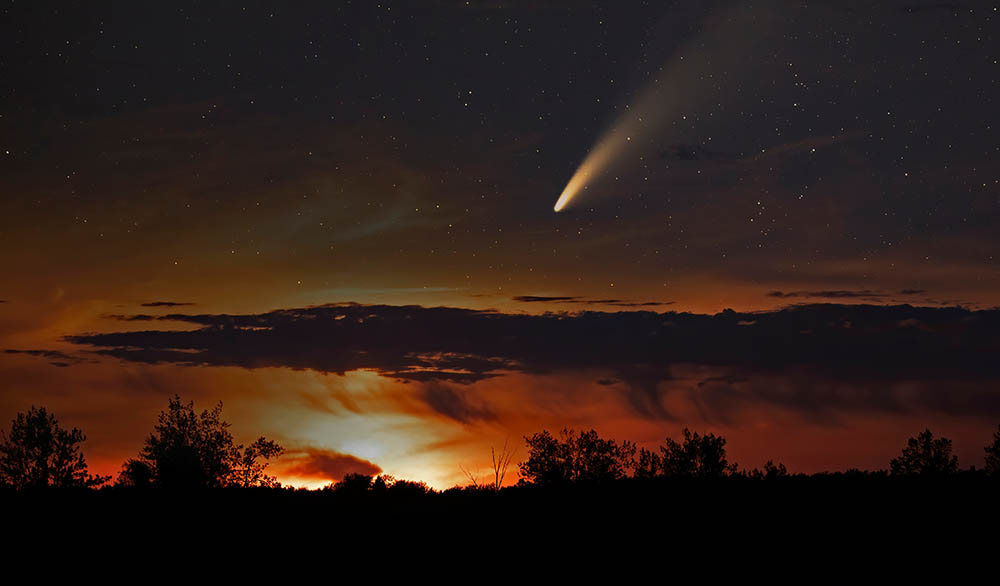What Is a Meteor? What Is a Meteorite?
Last Updated on

The planets, the stars, the Moon, and the sun usually captivate our attention, but we all share in the excitement when we see something bright shoot across a dark sky. You may have heard about the catastrophic cosmic rock that killed off the dinosaurs and wonder about the possibility of one colliding with Earth again.
A meteor is essentially a burned-up piece of space rock, or more commonly known as a shooting star, that becomes a meteorite if it makes it down to Earth.

What Is the Difference Between Them?
A Meteoroid is a space rock that can be as small as a dust grain or as big as a small asteroid. They are pieces of larger space bodies like comets, asteroids, and even the Moon. When the meteoroid enters the Earth’s, or any other planet’s atmosphere at high speed, they burn up, resulting in meteors. Most of them burn up before hitting the Earth, and in some instances, they deflect off the atmosphere and return to space. If a meteor survives the journey and makes it to earth, it is known as a meteorite.

What Are the Different Type of Meteors?
- Fireballs: Fireballs are unusually bright meteors. They reach a visual magnitude of -3 or brighter. Objects greater than a meter in size are usually the cause of a fireball event.
- Bolides: When a fireball explodes into the atmosphere, it is referred to as a bolide, but the two terms are often used interchangeably.
- Earthgrazers: An Earthgrazer is a meteor with a very shallow trajectory that skims across the upper atmosphere for long distances.

What Are the Different Types of Meteorites?
More than 50,000 meteorites have been found on Earth, with 99.8% of them coming from asteroids. The remaining 0.2% come from the Moon and Mars. The classification of meteorites is complex, but generally speaking, they can be classed into three groups: stony, iron, and stony iron.
- Stony Meteorites: Stony meteorites contain mostly silicate minerals, and most meteorites are stony meteorites. There are two main types known as chondrites and achondrites, which may have subgroups based on their composition, structures, and minerals.
- Chondrites can come in different varieties relative to the meteor that they came from. They have a distinctive appearance, which is made up of grains of sulfide and iron-nickel metal mixed with droplets of silicate minerals. Chondrites can tell scientists a lot about how the solar system was formed.
- Achondrites are igneous, meaning that at some point, they melted into magma. Igneous differentiation happens when magma cools and crystallizes, creating a concentric layered structure. Achondrites allow us to learn about the formation of the planets, as well as their internal structure.
- Iron Meteorites: iron meteorites are said to be cores of melted asteroids. They are made of mainly iron-nickel metal with small amounts of carbon and sulfide minerals. In the early history of the solar system, many asteroids melted, and the dense iron found in them formed a metallic core when they sank to the center. Iron meteorites can contain a variation of texture and minerals, producing many groups and subtypes.
- Stony-Iron Meteorites: Stony iron meteorites are some of the most beautiful rocks. They include semi-precious and precious gemstones in their makeup but consist mainly of equal parts silicate minerals and iron-nickel metal. There are two types of stony-iron meteorites: mesosiderites and pallasites. Mesosiderites form when two asteroids collide, and the debris is mixed together. In the collision, molten material is mixed together with solid pieces of silicate rock. Pallasites contain large olive crystals known as olivine. They sometimes look like a cluster or like veins patterned through solid metal.

How Are Meteors Detected in Space?
While the United States doesn’t have a radar dedicated to locating meteors, NASA has a network of 17 cameras that can identify streaks of light or fireballs in the sky and calculate their trajectories and speed.
Canada’s Meteor Orbit Radar is able to detect meteors that measure 0.04 inches while detecting the location, speed, and direction.
The Meteor Composition Determination experiment studies the chemical composition of the meteors that enter the Earth’s atmosphere. It analyses the physical and chemical properties of meteoroid dust along with taking high resolution videos and photos of the Earth’s atmosphere.

Famous Sites Where Meteors Crashed
Space debris hits Earth every day. While most are no bigger than dust particles, they can be more devastating on rare occasions. Let’s look at some of the most famous sites meteorites that have crashed.
- Ensisheim- France: The rock that struck Ensisheim is the oldest recorded meteorite and is classified as an ordinary Chondrite. The 330-pound stone dropped from the sky and into a wheat field in Alsace in 1492. The German king Maximilian decided it wasMurchison- Australia: This is the first time organic materials were found in a meteorite. The space rock contained molecules such as amino acids and exploded over the town of Murchison in Australia in 1969. More than 220 pounds of the meteorite were collected and can be found in museums all over the world.
- Chihuahua- Mexico: In 1969, a fireball slammed into the ground and exploded, scattering thousands of fragments across the landscape of Chihuahua in Mexico. Bits of aluminum and calcium were found embedded in the meteorite. NASA scientists thought these were the first pieces of solid matter formed in the earlier period of the solar system.
- Chicxulub Crater-Mexico: This famous crater is thought to be created by the meteor that caused the extinction of the dinosaurs. Over 65 million years ago, this catastrophic rock hit the ground in Mexico. The asteroid was about 7.5 miles wide and was traveling about 27,000 mph before it created a 124-mile-wide crater.

Frequently Asked Questions (FAQs)
What is a meteor shower?
It is estimated that 48.5 tons of meteoritic material hits the Earth every day. Most of the material is vaporized, which leaves a bright trail of shooting stars. Sometimes the number of meteors is much greater, creating a meteor shower
Why are meteors important?
Meteorites from meteors help scientists understand the planets of the solar system and what goes on deep inside them. This is how we know that Earth has a core, even though no one has ever been to the center of the Earth.
Do meteorites hit Earth every day?
Research has revealed that 6,100 meteors that are large enough to reach the ground hit our planet yearly. Most of them fall unnoticed, but occasionally they will catch more attention.

What was the biggest meteorite found on Earth?
The largest meteorite was discovered in Namibia in 1920 and is referred to as the Hoba. It weighs approximately 119,000 pounds, and because it is so heavy, it remains in the same location!
A Quick Reference Guide
Here is a quick look at the differences between Meteors and Meteorites:
| Meteor | Meteorite |
| When a meteoroid enters the Earth’s surface, it becomes a meteor | If a meteor survives the journey through the atmosphere and makes it to earth, it is known as a meteorite. |
| They are usually millimeter-sized and smaller | Their size ranges from the size of a pebble to 220 pounds or greater. |
| Bolides, fireballs, Earthgrazers | Stony, iron, stony-iron |
| Meteors are burning rocks | Combination of metal, nickel, and magnetic elements. |

Conclusion
While a meteor and a meteorite have significant differences, they come from the same mass of cosmic rock. A meteor can be seen in space as a bright light shooting across the sky, better known as a shooting star, and if it survives the journey to Earth, it becomes a meteorite. They can occasionally be found on Earth and sometimes create monumental craters.
Featured Image Credit: Triff, Shutterstock
About the Author Robert Sparks
Robert’s obsession with all things optical started early in life, when his optician father would bring home prototypes for Robert to play with. Nowadays, Robert is dedicated to helping others find the right optics for their needs. His hobbies include astronomy, astrophysics, and model building. Originally from Newark, NJ, he resides in Santa Fe, New Mexico, where the nighttime skies are filled with glittering stars.
Related Articles:
Binocular Magnification Chart: Numbers & Distances Compared
What Is the Best Binocular Magnification for Hunting? Optical Features Explained
When Were Binoculars Invented? History, Today & Future
How to Clean a Refractor Telescope: Step-by-Step Guide
How to Clean a Telescope Eyepiece: Step-by-Step Guide
How to Clean a Rifle Scope: 8 Expert Tips
Monocular vs Telescope: Differences Explained (With Pictures)
What Is a Monocular Used For? 8 Common Functions
